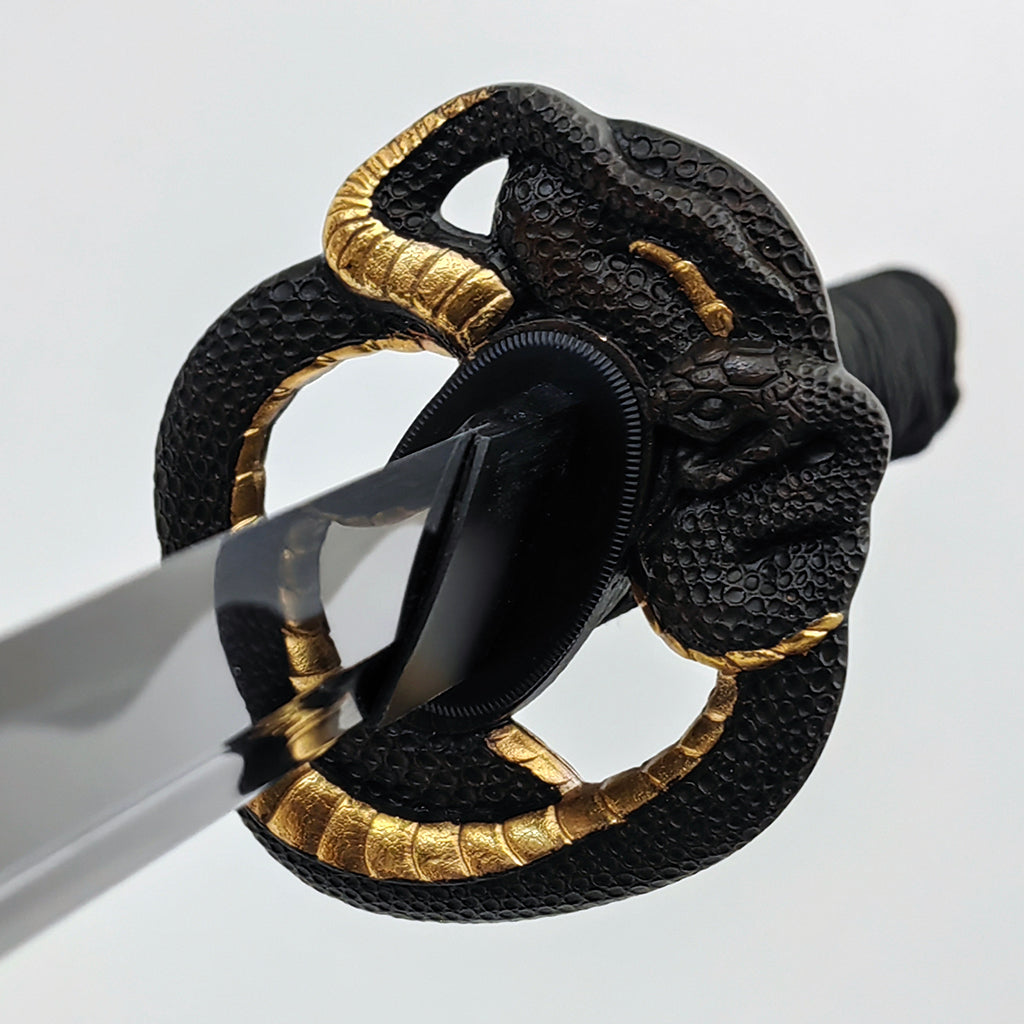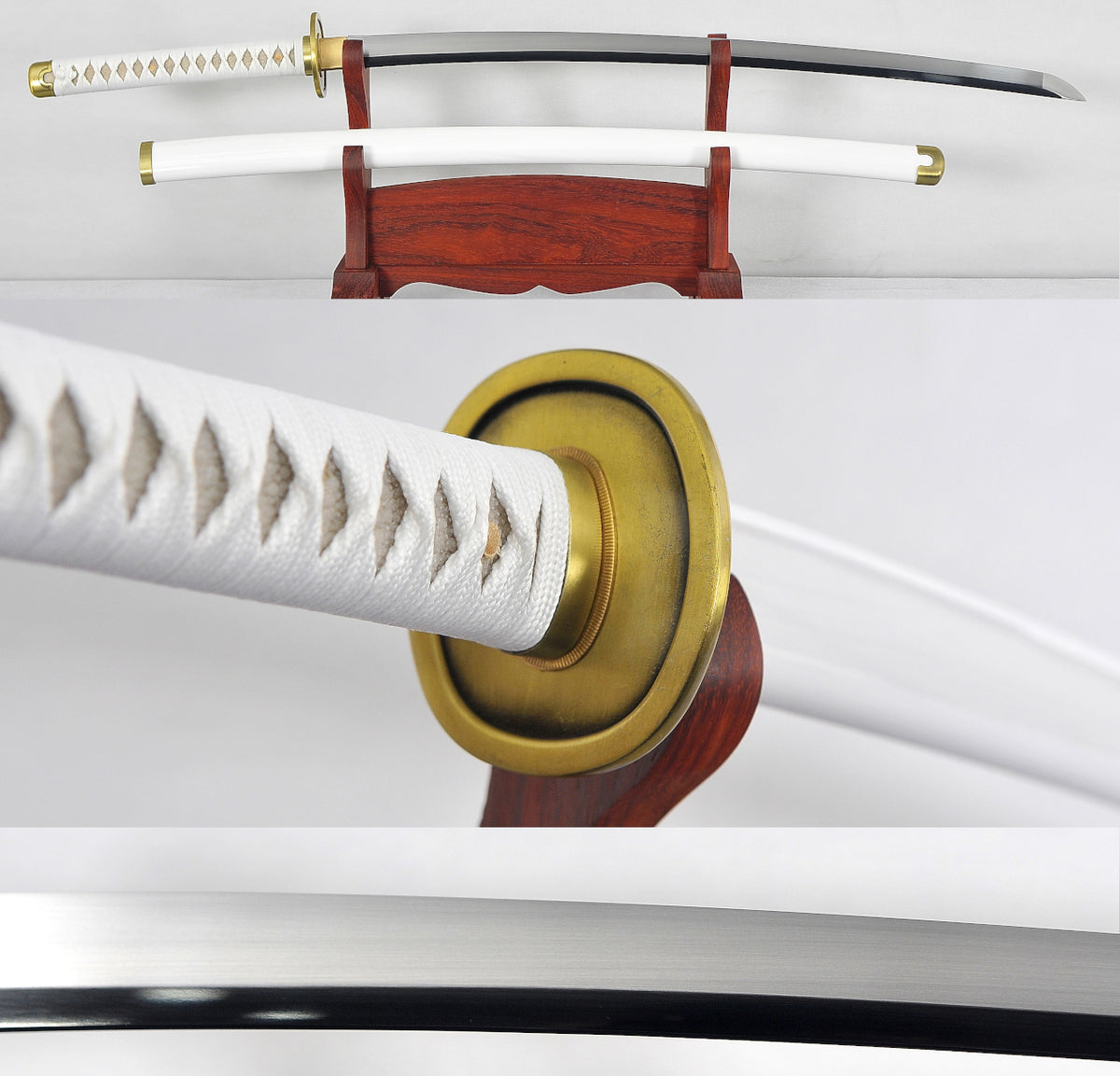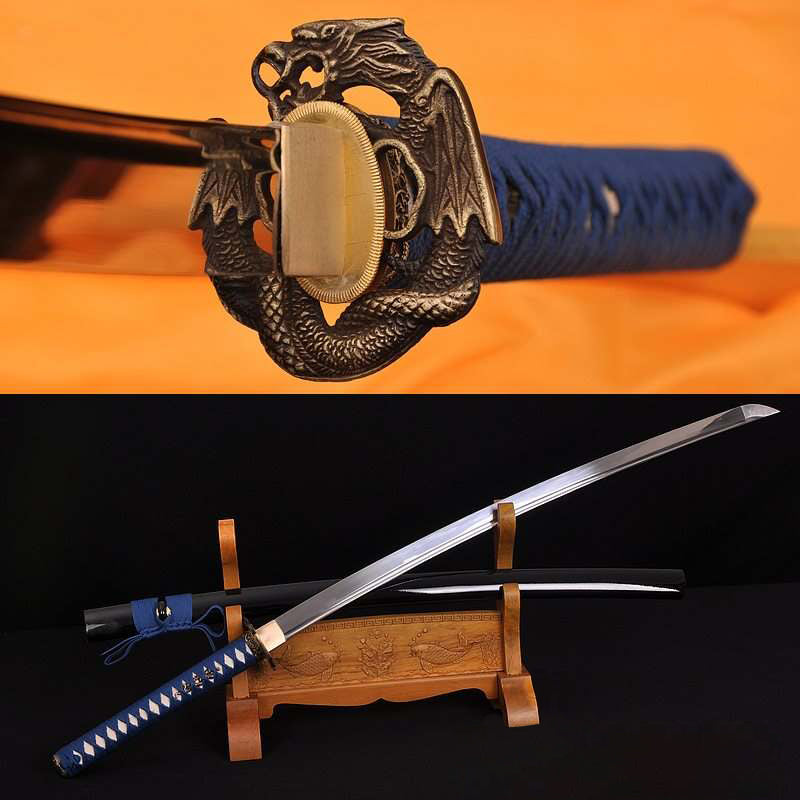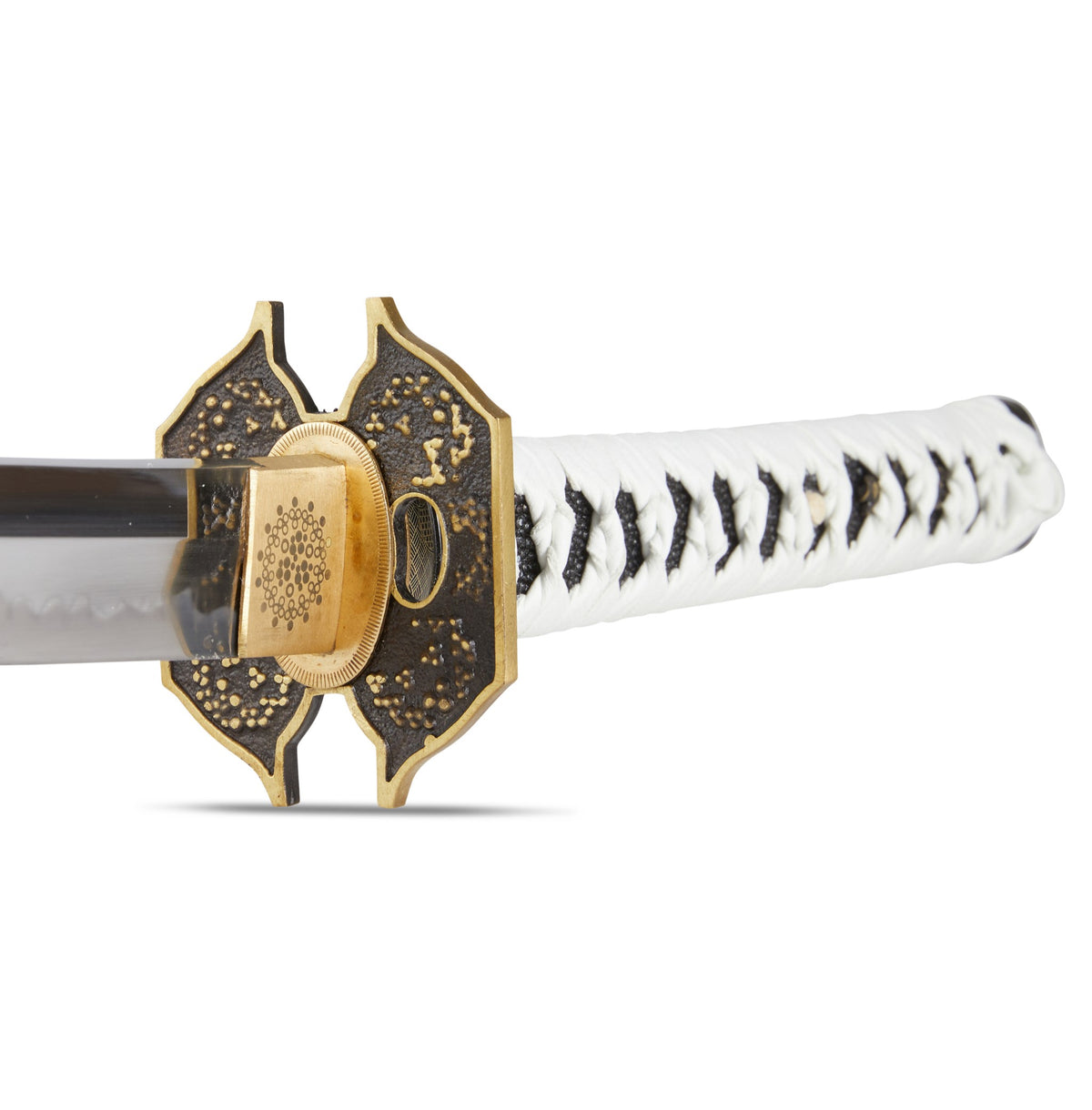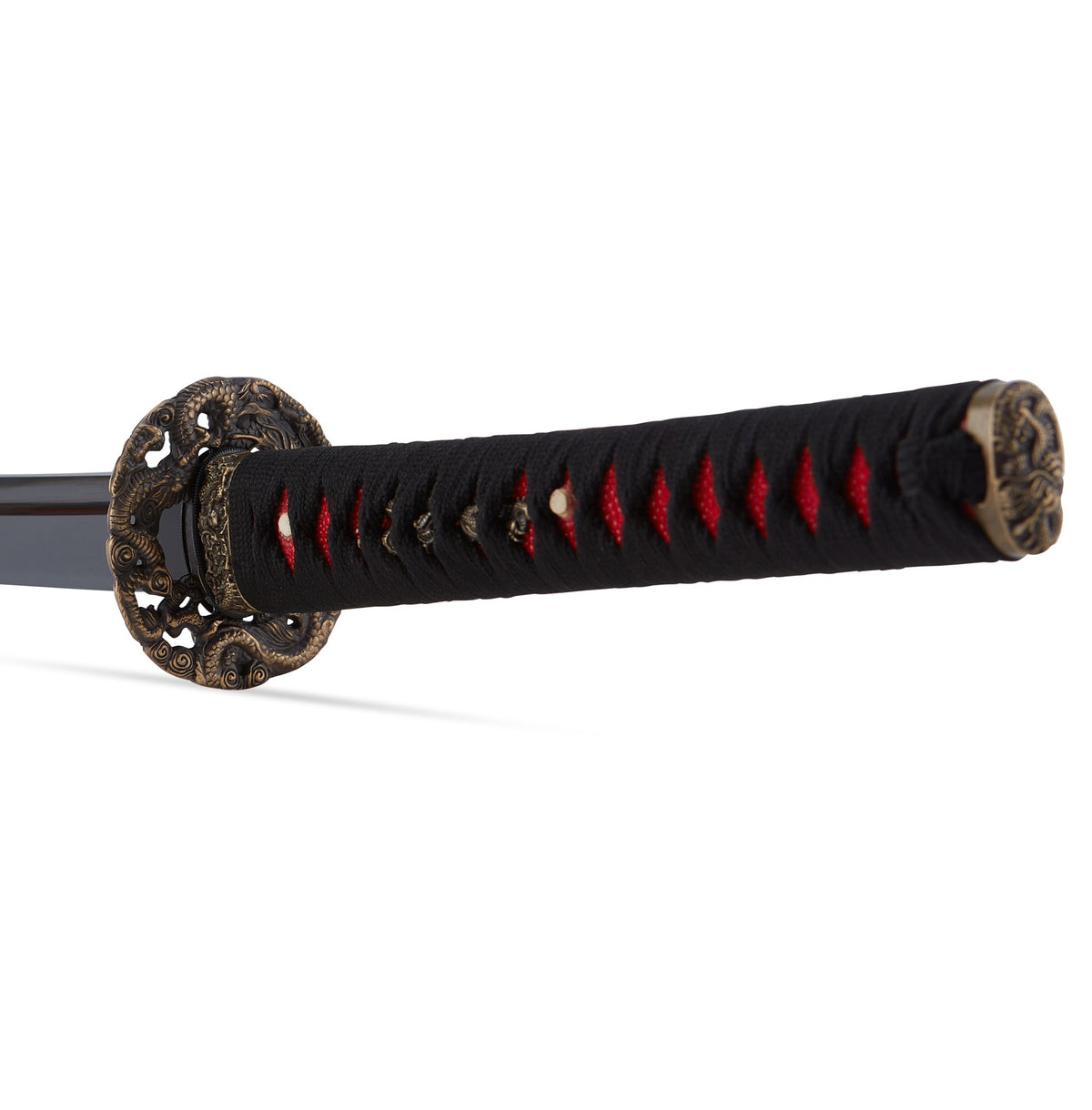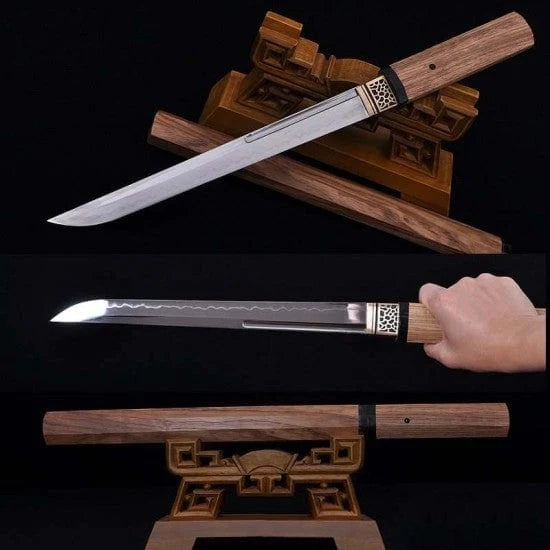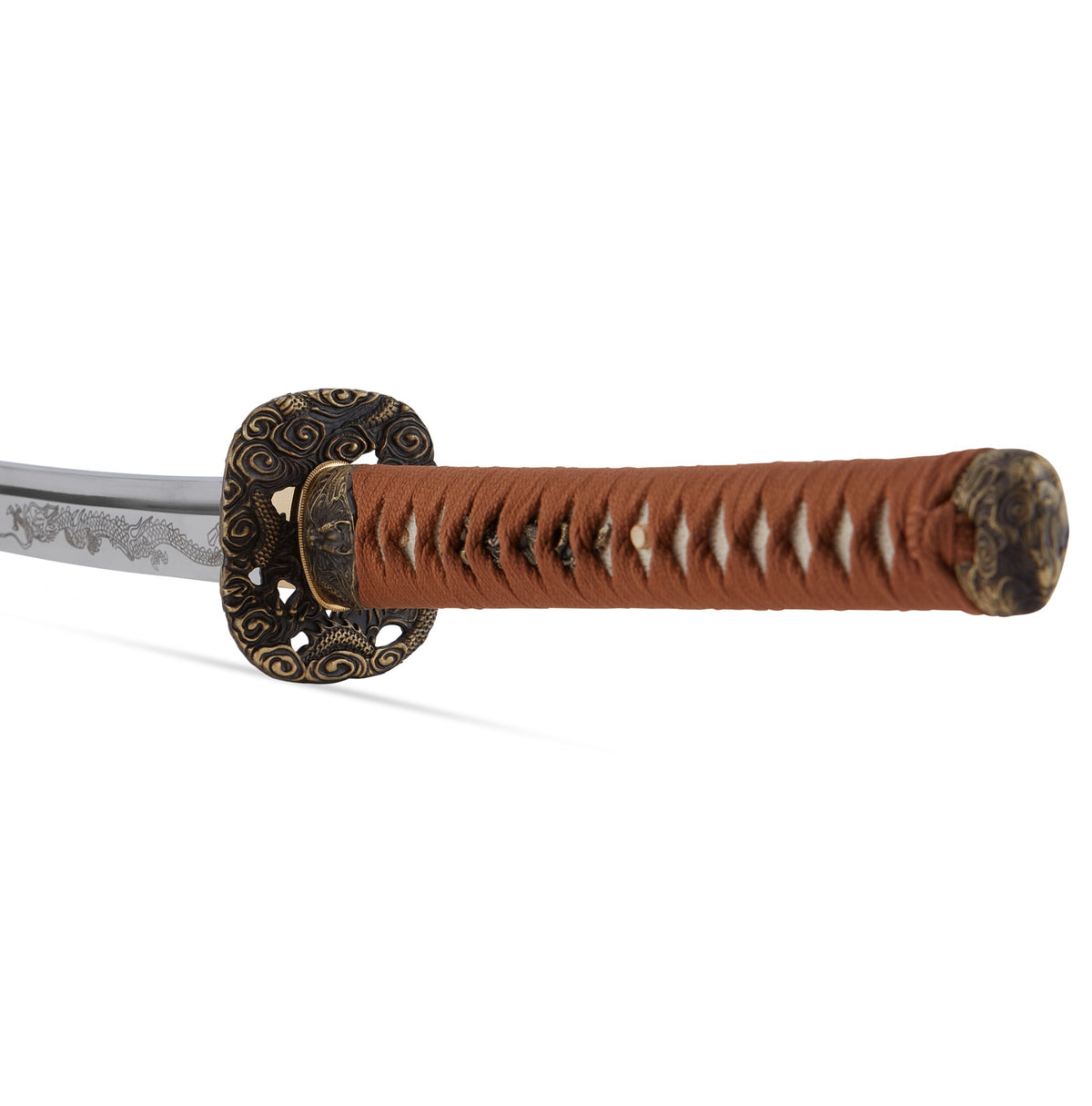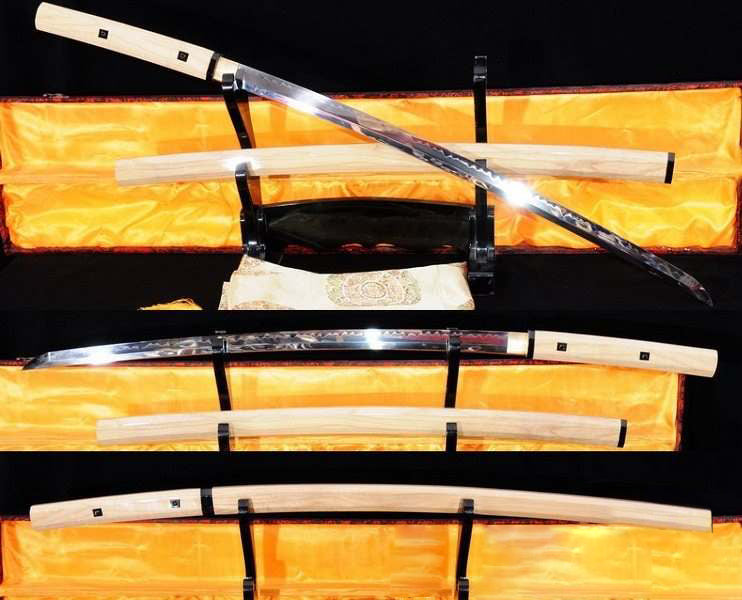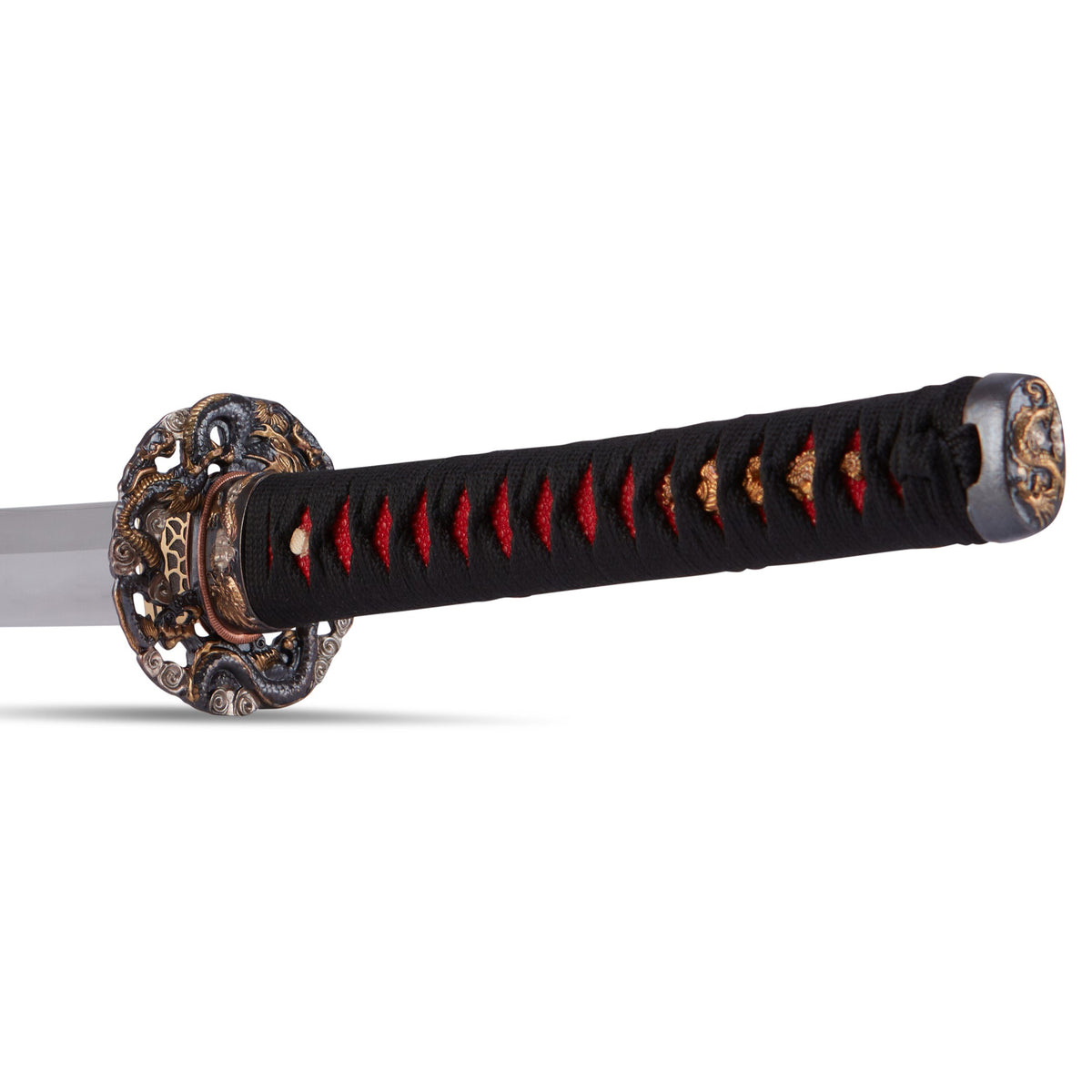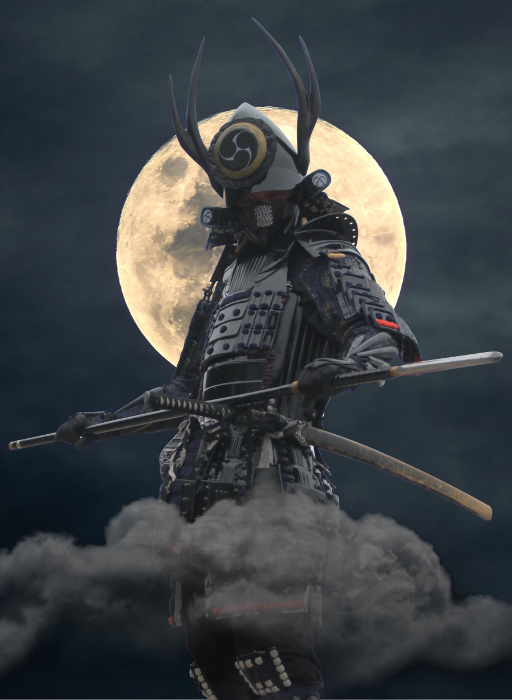How to Traditionally Polish a Japanese Sword

Polishing Japanese swords, whether katana or wakizashi, requires extreme care and patience. A good polish can greatly increase the beauty and value of a sword, while a bad polish can permanently ruin a blade by disrupting it’s geometry. This is why when learning the art of sword polishing, we suggest first beginning with a low-value sword. The main point of beauty of the Japanese sword is the hamon, or temper line, which is hidden within the steel until it is displayed by the polisher. You could say that a sword polisher, otherwise known as Togishi, reveals the soul and beauty of the sword.
Japanese swords, or nihonto, are polished using around 7 to 8 types of whetstones, and there are 4 or 5 more finishing steps, including wafer-thin hazuya and jizuya stones, and nugui powder to further enhance the appearance of the blade. The first phase of polishing, called Shitaji togi, begins with a coarse Uchigumori stone which finalizes the rough shaping work started by the swordsmith, and removes any scratches and rusting.

Uchigumori Stone
Increasingly finer grits of stone are used as the basic stage of polishing continues. The blade is passed over these stones back and forth repeatedly, establishing correct geometry, and making surfaces crisp and proper. Correct stone shape is essential in order to ensure the blade is being polished evenly. A bucket of water is kept close-by to wash the sword after each pass, which is where Japanese water stones get their name. If any bo-hi (groove) is present, it is not polished using the larger stones, but with smaller-sized stones or a small burnishing needle called a migaki-bo. By the use of these stones in polishing, the harder and softer parts of the steel begin to contrast and become more evident. The white, harder part of the steel consists of microscopic crystals and when light is reflected on them, the hamon becomes visible.

The polisher frequently inspects his work during this process, verifying that it is going to plan. Crisp and correct shaping is of the utmost importance. When a master polisher is at work, you can hear the blade singing as it passes over the stone. It takes many years of experience before you can produce such a sound. This rough polishing of the sword takes around three days, at which point the first half of the polishing process is complete.

The first half of the polishing process is much the way you might polish a kitchen knife, passing the blade over a fixed stone. The second half of the process, called Shiage togi, or finishing polish, is done using smaller, finer stones to further refine the blade and remove marks caused by the coarse stones. In this stage, the positions of the stone and blade are reversed. Instead of the polisher moving the blade across a larger, stationary stone, the blade is kept stationary and smaller stones are passed over it by the Togishi.
A large stone is split into small sections with a sharp knife, each section about 2 or 3 mm in thickness. After, the stone’s thickness is further reduced, and then it is glued on to a special paper called washi with a very strong adhesive lacquer. The polisher spends about a week every year making these thin polishing stone papers. He carefully uses one of the stone papers to polish every inch of the blade, further revealing the beauty within the steel.

Hazuya and Jizuya Finger Stones
It’s important to note that when restoring a blade, especially when it has been worked on in the past, the polisher must be careful not to remove any more steel than is required to properly polish the blade, or else the fine geometry of the blade will be damaged. Each section of the blade must be polished at the specific, minute angle required, whether it be the spine, kissaki, or cutting edge, in order to maintain it’s original geometry. This is another testament to the Togishi’s patience.
The final stage uses the thinnest pieces of stone, called Hazuya, which are glued onto the washi paper. The thickness is about the size of a normal postcard. These stones remove any microscopic scratches caused by the previous ones. Proper lighting is required in the polishing environment in order to spot small marks and defects in the steel. As the paper is used, the layer of stone gets smaller and eventually dissipates.

Next, the polisher holds the blade still and with a .5mm thick polishing stone on his thumb, called Jizuya, painstakingly rubs it over the surface of the entire blade; Not strongly, not weakly, but just enough where he can feel the correct degree of pressure. The small, wafer-thin slice of stone conforms to the curve of the sword and finely polishes it, revealing the soul of the sword and further bringing out the hamon and jihada (grain pattern) created by the folding process. Again it becomes thinner and thinner until it’s eventually worn away. When the finger stone dissipates, and the color of the softer spine and harder cutting edge contrasts greatly, the polisher knows his job is done. This final process of polishing and sharpening takes another 3 to 4 days, and will result in a blade with a mirror-like finish, absent of any visible scratches on the blade. These natural stones from Kyoto are very rare and expensive, there is no man-made substitute.

The full process of polishing a Japanese sword will take around 2 to 3 weeks from the basic polishing stage to the final, finer stages. After polishing is complete, a special Nugui mixture is applied to the blade which whitens the hamon and darkens the surrounding areas. A well-done polishing will make the blade easily identifiable as to it’s maker and dynasty, sometimes even more so than the smith’s signature itself. It will also reveal how fast the edge was cooled, from what temperature, and what the carbon content of the steel is. This can be seen from the fine martensite crystals that appear on the steel when inspected under a microscope.
The tang of the blade, or nakago, is left unpolished and only partially finished with file marks which provide a friction-fit for the handle, or tsuka. Collectors should not touch the body of a high-end sword. If the blade is touched and not cleaned thoroughly, natural oils from your skin will cause the blade to rust and it will be very costly to polish again. Nowadays, the price for traditionally polishing one inch of a samurai sword by a very experienced sword polisher is around $90-110. On average, it will cost atleast $70, a total of approximately $2,000 for a 28 inch katana.
Best Sellers
- Regular Price
- from $199.99
- Sale Price
- from $199.99
- Regular Price
-
- Unit Price
- per
- Regular Price
- from $299.00
- Sale Price
- from $299.00
- Regular Price
-
- Unit Price
- per
- Regular Price
- from $199.00
- Sale Price
- from $199.00
- Regular Price
-
$0.00
- Unit Price
- per
- Regular Price
- from $619.00
- Sale Price
- from $619.00
- Regular Price
-
- Unit Price
- per
- Regular Price
- from $319.00
- Sale Price
- from $319.00
- Regular Price
-
- Unit Price
- per
- Regular Price
- from $249.00
- Sale Price
- from $249.00
- Regular Price
-
- Unit Price
- per
- Regular Price
- from $339.00
- Sale Price
- from $339.00
- Regular Price
-
- Unit Price
- per
- Regular Price
- from $219.00
- Sale Price
- from $219.00
- Regular Price
-
- Unit Price
- per
- Regular Price
- from $364.00
- Sale Price
- from $364.00
- Regular Price
-
- Unit Price
- per
- Regular Price
- from $519.00
- Sale Price
- from $519.00
- Regular Price
-
- Unit Price
- per
